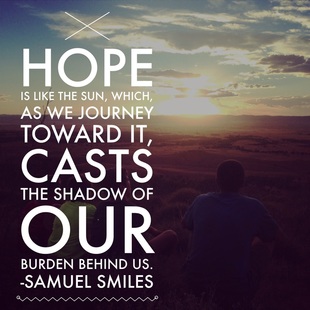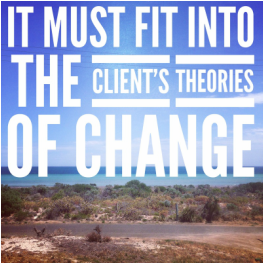 I was reading a bit this morning about the Hero’s Journey and comparing that literature to my approach with adolescents. In the bush, we have a large focus of what happens next and are always looking at how we can make sure the positive effects of our program transfer to life at home. I was speaking with a researcher in Sydney last week about this transfer and found his research to be so intriguing. Now we know that no matter what service we provide that the effects tend to diminish over time. This has been a real concern for out-of-home programs, like wilderness therapy, and why True North Expeditions puts such a large emphasis on follow-up support. But one thing we do not talk about much is how to make sure the positive effects of one-on-one counselling can endure. The researcher I spoke with said that of all the fields of education that airplane pilots have the best outcomes when it comes to transferring knowledge from practice to real life experience (as a nervous flyer I should hope so). But how does this fit into therapeutic work? Let’s use the example of drugs and alcohol. Many of the young people we see have struggled with drug abuse or addiction and benefit significantly from our 14-day program. Time away in a neutral environment provides them with ample time for reflection in one of the most supportive and nurturing setting. After becoming a successful team and feeling the benefits of being truly self-sufficient, our adolescents begin setting positive goals for themselves. They start to talk about life without the drugs and family conflicts. But they have not yet had the practice experience that leads to real world success. The struggle I can see is that many programs stop here. They provide a session or two of “relapse-prevention” work and send the client on their way. While brainstorming with my colleague about a research project we had in mind we continued to say that all of these interventions, adventure therapy included, provided fantastic opportunities for young people to start down the right path. I have always called it the “Therapy Booster Shot” but never the band-aid or quick fix. We have had the opportunity to live together building a strong relationship and setting achievable goals for success. However, our focus needs to be towards transferring the successes of life in the wild to life at home. Research suggests that this transfer is highly individualised and this is the approach we should take. Start by looking at what’s working. See if you can increase those aspects. In the therapeutic setting, we may practice in real life situations. This is the real advantage of adventure therapy. If there is a participant feeling anxious or struggling, we get to work through it right then and there. We don’t have to wait until our next session, which, in some cases, can be days away. For parents, I think that reminders of the goals your child set and ongoing encouragement is key. Change is always occurring and despite common setbacks, your child can always keep moving forward. I use the analogy of a ladder or steps with adolescents that come in feeling as though they had not achieved their goals for the week. Say, for example, there was an argument at home and the child feels as though he or she had taken a step backwards. You cannot go backwards if at first you were not a step ahead. This is the key focus of follow-up support. Making sure that we are paying attention to the little victories occurring each day so that we are always a step ahead. Then, when it comes to that moment when a peer at school offers your child to skip class or when he is at a party where drugs are involved, he knows just how far he has come. The victories are still fresh and he is aware of them. Making this transfer is difficult, for both the child and parent. We have put all of our attention towards it and work with families everyday to make sure that their child is returning home heroic and successful. Will Dobud MSW [email protected] www.willdobud.com 0477161768
0 Comments

As I am currently in the throws of playing dog sitter for a friend overseas, I have been going on increased walks throughout each day. It was funny that this coincided with a post on our Facebook page about the effects walking has on our mental health and wellbeing. However, during these walks I tend to switch back and forth between listening to guided mindfulness meditations or listening to a podcast. Yesterday the podcast won the roll of the dice.
I was listening to an interview and the interviewee said something that really stuck with me. He said that his father taught him that in life he could be either the Thermostat or a Thermometer during difficult situations. Now all the adventure therapy folks out there know the value of a good metaphor and I think this is a great one. The thermostat regulates the temperature of our house while the thermometer reacts to it. Which one will you be? I paused the podcast after hearing this metaphor and just let myself think of all the metaphors I could. Helping those around us is a big one. Here we go… Think of a friend that is angry, or heated. If I am the thermometer then I may react and become heated as well. But if I choose to do the work of the thermostat, I may decide to try to help him cool down. Can I help him or her to chill out? What if my brother is struggling with an intimate relationship and is feeling down, or cold and alone. This may have the effect of bringing me down but I can also be a person that brings warmth and light to his gloomy day. Although we cannot force change onto another person we can be that someone, the thermostat, that brings them the warmth they need. There are days when its easier to be one or the other but I think that having this metaphor in my back pocket can be a simple reminder of the person I am striving for. In our families, it’s easy for one person’s struggles to cause strife on the rest of the household. Making all of our metaphoric temperatures fluctuate. But if I am aware that at this time my role is to be the thermostat then I know I am going to be there for the children or spouse who needs me. That way when my personal temperature moves to a place that I’m uncomfortable with, they will be there for me. I think this is a really great metaphor that can be used with people of all ages. Teaching our young people to not only be aware of physical discomforts but the emotional ones can help them to reflect on their “current temperature” at anytime. In the bush I have drawn a thermometer in a young person’s journal as a way to see how they are feeling. Remember in cartoons when someone is so angry their thermometer bursts? This practice is not so concerned about what happens when the burst occurs but all the preventative things we can do before it happens. So our challenge this week is to see what we can do to not only help regulate the temperatures of those around us but for ourselves. Not to react and get pulled in the deep end with those that need us most. Be the unconditional warmth to those that need it and the breath of fresh air for the challenges ahead. Will Dobud [email protected] 0477161768 www.willdobud.com  Last night I visited a new parent support group in the Adelaide Hills for parents of all ages who had a son or daughter struggling with addiction. The group had already met once before and I kneww it could be awkward for a group leader to walk into a new room of individuals trying earn respect. So I sat and listened at first to the participants’ stories. The group was created after one of the mother’s went to her local council and asked if they could create a group where parents could support each other and a specialist could come in to help come up with new ideas or provide some information about drug abuse and addiction. I was pleased to have been offered the opportunity to lead this group and came to the first session I could after coming back from the bush. When asked to provide some background about my work experience I told them that I specialised in working with children, adolescents and provide support for parents as well. I told them that I knew I was the outsider and was honoured to have been welcomed into their group. I went on to say that as this is my first session with you all I am more interested in what each individual thinks I can do to be the most helpful versus me coming in as some wise guru who will offer the best clinical advice. One father said he would like to learn skills about how to regulate his emotions as the issues at home are affecting him at work while another said she just wanted to feel inspired to keep trying new things to help her ailing son. I can do those things, I thought. One mother told me that she was pleased to hear that I was open to feedback, as she had seen previous helpers who had simply given her lists or pamphlets of what she should do. She said that when it came to a stressful situation or conflict she could not remember what was on the list or simply just could not do those skills at those times. Despite all the different feedback provided by the participants, I knew one thing to be certain. For any therapy to work, whether its group or individual, my techniques needed to marry with how that person sees change is going to happen in their life. Many of the young people I see on a daily basis tell me that they have seen psychologists, social workers, counsellors, school workers etc. that have missed the opportunity of creating a strong relationship because they have not taken time to learn about how the person sitting with them sees change occurring. While completing the program evaluation research we conducted for our adventure therapy program in 2014, my supervisor told me about a “cooperative enquiry” he did for a previous research project. What this means is that instead of him, the researcher, writing about his expert opinion, he wrote his article with two people that fit into his research group. I thought this was an amazing idea for adolescents. Make them the experts. My next session, with a 16 year old who had lost his father when he was very young, I asked him what he thought has been the most helpful support he has gotten from all the previous clinicians he had seen. He said that he liked feeling welcomed and important and not lectured. I found this interesting because I feel the same way about most things in life. He said he could tell when there was a worker that truly wanted the best for him versus one that was there for a job. I took his input on board and for each young person that comes to see me I ask them if there is anything that I should do to be helpful or anything I should not. This helps to know whether I am working with their strengths and under their direction and not just guessing what I think is best. That will definitely miss the mark. Will Dobud 0477161768 [email protected] |
Contact WillE: [email protected] Archives
September 2019
Categories |
 RSS Feed
RSS Feed
